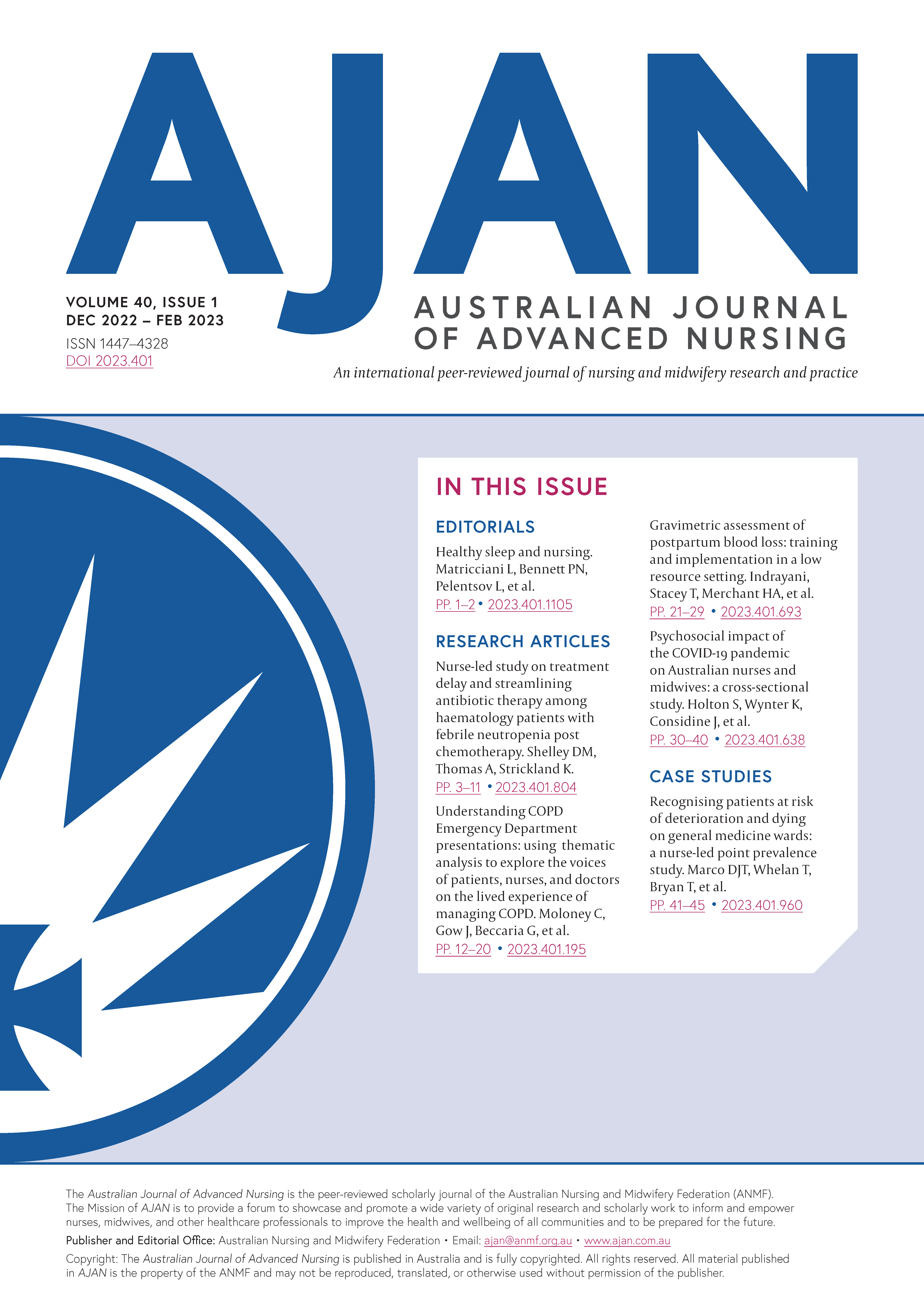Clint Moloney
Jeff Gow
Gavin Beccaria
Amy Mullens
Tania Phillips
Hancy Issac
Alex king
Gerben Keijzers
Rezwanul Rana
Chronic Obstructive Pulmonary Disease, Emergency Department, Discharge Planning
AbstractAim: To describe for areas of improvement in the management of COPD and reduction in emergency department presentations in Queensland. Background: If current trends in the management of COPD do not change, the predicted 4.5 million Australians diagnosed with COPD by 2050 will place significant burdens on already over-utilised frontline ED services. Separately COPD is more costly per case than cardiovascular disease and is a more common presentation to Emergency Departments in any year than most types of cancer, road traffic accidents and heart disease. Study Design and Methods: This study used a qualitative thematic analysis methodology in which field convergent interviews were employed to generate data. Sixteen staff and nine patients across three major Southern Queensland Health acute care facilities participated in the study. The authors analysed interview data using qualitative thematic analysis. Results: This research has revealed several noteworthy concepts worthy of further exploration. Thematic analysis from both staff and patient interviews identified the following issues: 1. Nurse case management, 2. Integrated communication of patient assessment and history data, 3. Failure in COPD management, and 4. Knowledge utilisation among ED clinicians. Inherent among these key concepts is a primary goal of coordinated congruent COPD management that optimise a patient’s functional status and quality of life, improving symptoms management, and avoiding recurrent exacerbations. Discussion: These insights into the experience of patients and hospital staff into the management of COPD provides valuable insight into current and desired practices that can help to minimise presentations to Emergency Departments. The findings of the research provide insights and future direction for improvements by addressing the inconsistency in disease management. The need for more accessible and consistent patient management and a more congruent centralised patient support framework was also identified. Conclusion: There is indication of support stemming from the voices of patients and hospital staff around the need for COPD case management to become the dominant method of care. Future research should consider the cost benefit and patient outcomes of the implementation of such a role and the avoidance of ED presentations. Implications for research, policy, and practice: The findings of this research imply a need to streamline the patient support and disease management discharged planning process by ensuring one health professional maintains ongoing education, support, and assessment to the patient. Future research needs to better ascertain the positive economic benefits to healthcare organisations by employing Case Managers for patients with COPD.
What is already known about the topic?
What this paper adds:
 Article Details
Article Details
How to Cite
1.
Moloney C, Gow J, Beccaria G, Mullens A, Phillips T, Issac H, king A, Keijzers G, Rana R. Understanding COPD Emergency Department presentations: using thematic analysis to explore the voices of patients, nurses, and doctors on the lived experience of managing COPD. Aust J Adv Nurs [Internet]. 2023 Mar. 1 [cited 2023 Mar. 1];40(1). Available from: https://www.ajan.com.au/index.php/AJAN/article/view/195
Manuscripts accepted for publication become the property of the AJAN.
Comments (0)